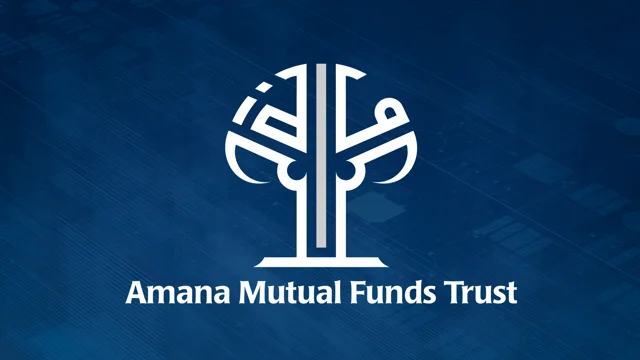Saturna Capital’s Amana Income Fund (AMANX) and Amana Growth Fund (AMAGX) are two shariah-compliant products that have the longest track record. The Income Fund started back in 1986, while the Growth Fund kicked off in 1994. As stated on Saturna Capital’s website, both funds diversify their investments across industries and companies, and principally follows a large-cap value investment style. However, the Income and Growth funds pursue different investment objectives – current income and preservation of capital for the Amana Income Fund, and long-term capital growth for the Amana Growth Fund, respectively.

Shariah Compliance
Saturna Capital employs proprietary screens and an investment process developed in collaboration with Islamic scholars of the Fiqh Council of North America (FCNA). They use Amanie Advisors as shariah adviser to certify compliance. In addition to the business sector screens, which includes elimination of securities of companies in industries that do not adhere to Islamic principles, such as liquor, gambling, pornography, pork, insurance, banks, etc., Saturna Capital applies the following financial screens, seeking to eliminate companies with:
- greater than five percent of their revenue coming from haram sources
- greater than 33 percent total debt as compared to their market capitalization (trailing 12 month average)
- greater than 45 percent accounts receivable as compared to their total assets (trailing 12 month average)
Please follow this link for further details.
Performance and Risk of the Funds
Performance and risk statistics of investments are highly dependent on the chosen time horizon. Therefore, we look at 30-year, 10-year, and 4-year performance and risk statistics of the funds and compare them with SPY, QQQ, and SPUS ETFs, depending on their availability.
Over the 30-year period, AMAGX (28x) outperformed both SPY ETF (18x) and AMANX (12x) significantly. AMANX, on the other hand, underperformed the SPY ETF. The volatilities of the funds also follow this order – 17% (AMAGX), 15% (SPY), and 13% (AMANX).
Over the last 10-year period, QQQ ETF (18% CAGR) significantly outperformed AMAGX (15% CAGR), SPY ETF (13% CAGR), and AMANX (9% CAGR). QQQ ETF also had the highest volatility (18%), while AMAGX and SPY ETF both had about 15% volatility. AMANX had slightly lowest risk with a 14% volatility.
The most recent 4-year data show that QQQ ETF, again, outperformed the other three alternatives. This time we have replaced SPY ETF with SPUS ETF, which is a relatively new shariah-compliant ETF. And SPUS showed very similar performance and risk statistics to AMAGX. AMANX showed the least amount of growth with the lowest volatility.
Active Portfolio Management
AMANX and AMAGX do not follow any specific benchmark. This means that the portfolio managers of these funds have full discretion to invest or not to invest into a company. In contrast, the SPUS ETF seeks to track the performance of the S&P 500 Shariah Industry Exclusions Index. Skilled portfolio managers may outperform passive funds by taking action and changing the composition of their actively managed funds. However, active portfolio management does not guarantee consistent outperformance.
The following two charts show the amount of bough and sold shares of companies in AMANX and AMAGX funds (quarterly data). For example, by double clicking on “2020-05-31” (on the legend), which corresponds to the quarter when COVID-19 happened, we can see that AMANX portfolio managers cut exposures to the following companies:
- Air Products & Chemical (-30K);
- Carlisle (-50K);
- Eli Lily (-60K);
- Honeywell International (-40K);
- Linde (-30K);
- McCormick & Co (-50K);
- Microsoft (-50K);
- Stanley Black & Decker (-28K).
Similarly, during the COVID-19 event/quarter, the portfolio managers of AMAGX also liquidated the following number of shares of companies :
- Clorox (-50K);
- EMCOR Group (-418K);
- Fastenal (-220K);
- Lincoln Electric Holdings (-53K);
- Norfolk Southern (-50K);
- TJX Companies (-250K);
However, the following quarter the portfolio managers of AMAGX bought 1.5M shares of Apple and sold 125K shares of EMCOR Group. This turned out to be a great decision as the fund benefited from “V-shaped” post-COVID recovery.
Conclusion
The Amana Income and Amana Growth Funds have unique risk and return characteristics. AMAGX is suitable for those who are seeking higher growth with a substantial level of risk, while AMANX has historically shown lower risk and lower returns. It is also interesting to note that the SPUS ETF essentially exhibits the same risk and return characteristics as AMAGX over the most recent four year period. However, it does not have a long track record.
Therefore, the Amana Funds may still have a place in long term investors’ portfolios.
To learn more about this and explore our range of services, please contact us!
May Allah grant you barakah!

One response to “Review of Amana Income and Growth Mutual Funds”
[…] COVID-19 hit the markets, stocks and stock ETFs experienced losses exceeding 15%. However, during this period, WISEX only declined by 3.7%. Ostensibly, WISEX, AMAPX, and the SPSK […]